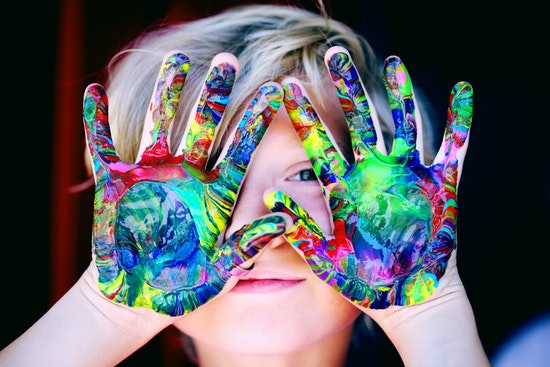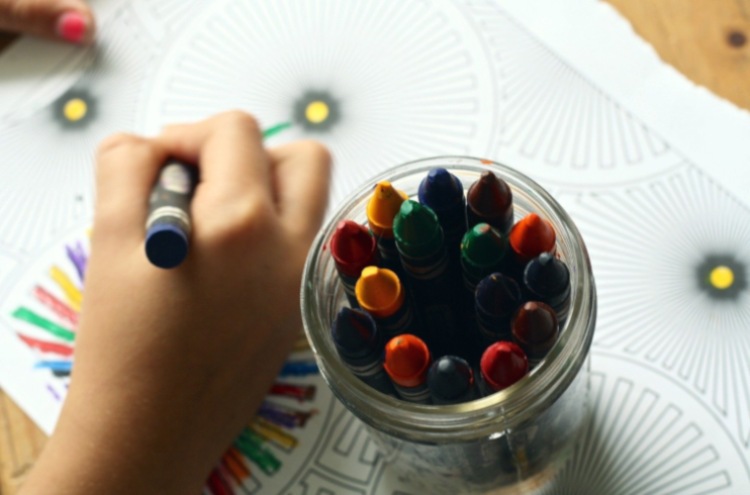Preschool years are the most important years to develop the knowledge of colours in your children. With the identification of colours, your children experience exponential growth in their cognitive intelligence (reasoning and thinking). Early recognition and identification of colours helps kids to build the cognitive link between visual subjects and words.

How to Teach Colours to Kids?
Teaching colours to kids is a milestone to reach in their cognitive process. But how exactly can you succeed in teaching colours to your kids? Well, kids are natural learners, things like a verbal lecture or a written book do not work for them. All they learn is through the environment they live in, and the same goes for the learning of colour. Children learn colours through the objects present in their environment.

Teach Colours to Your Kids through the Environment Around Them
# Before actually introducing kids to the concept of colour, they must be taught what different colours represent, for example, the sky is blue, the grass is green, the sun is yellow.
# This helps kids get familiarised with the colours up to a certain extent, which helps them to recognise colours in other different things also. For example, after knowing that the sky is blue, they may start seeking blue as a colour in different objects around them.
# Our world is full of colours, different daily objects from your kids’ lives can be used to make them learn colours at a faster rate. In short, learning colours should not be an activity for a specific day but it should be involved in their regular days.
All the above points can be considered as the basis of teaching colours to your kids; but there are a number of special activities for kids to learn colours in their classroom, as well as at their home online. Let’s read about the best five colour activities for kids.
ALSO READ https://therealschool.in/blog/how-teach-slow-learning-kids-6-tips-help/
What are the 5 Best Colour Activities for Kids?
1. Colour Scavenger Hunt
What you Need?
# Colourful objects around the house or the area of the scavenger hunt.
# A sheet with a list of different colours.
How to Do it?
# Ask your kid to find out different objects around the house or the classroom, and match them with the colours on the sheet.
How will it Help?
# Your kid will start associating different colours with the different objects around them.

2.Sort Fruit Loops by Colours

What do you Need?
# A small bowl of fruit loops.
# A printed colour-code sheet.
How to Do it?
Place the colour matching sheet along with a bowl of fruit loops, and tell your child to match the colour of the fruit loop by placing it on the colour in the sheet. Before starting this, do one yourself and show which are the colour names for each of the loops.
How will it Help?
Cognition and accurate identification of objects.
3.Spray Paint Colours

What do you need?
# A spray paint can.
# Old water bottle.
# A blank large canvas/ drawing sheet.
How to Do it?
# This can be a group activity, and you can gather your kid and their friends.
# Prepare a mixture of colours and water in a bottle.
# Let them create art with their hands and feet on the canvas through the spray bottle.
How will it Help?
The creativity of the child will be enhanced.
4.Sort Buttons

What do you Need?
A box full of colourful buttons.
How to Do it?
Ask your kid to separate buttons according to their colours.
How will it Help?
This will improve their visual cognition.

5.Colourful Egg Carton
What do you Need?
# Empty egg cartons.
# Colourful beads.
How to Do it?
# Colour the different empty spaces in the egg carton with different colours.
# Then ask the children to place different coloured beads to their respective coloured spaces in the egg carton.
Some Other Colour Activities
# Colour themed sensory tubs.
# Pom Pom colour distribution.
# Multisensory tubs.
# Mixing coloured water.
# Playing with coloured scarves.
# Exploring colour lights in the dark.
# Dancing colours in Gak.
# Giant rainbow collage.
# Mixing colour sands.
# Playing with colour clay.
Things to Remember While Teaching Colours
# You should always start with teaching the basic or primary colours, like blue, yellow, red. Do not start with complex or secondary colours like purple or navy blue.
# With the basic things around them like vegetables and fruits, you can make a daily habit for your kids to know colours by words. For example, mango is yellow, orange is orange.
# Try to give them simple drawings to fill with crayons.
# Always stay patient and ensure regularity in practice.
Conclusion
For kids, recognising different colours is a big achievement in their development process. But in order to teach them colours, you should adopt different and regular colour activities. These activities help kids to engage more and they will be able to learn colours in a fun way. At the The Real School Of Montessori, we are driven by the force of preparing kids for the real world. Our one-on-one personal mentoring and project-based learning is strongly centred around making children the future thinkers and innovators. For more such blogs visit the site.
ALSO READ https://therealschool.in/blog/how-to-motivate-kids-to-study-tips-tricks-to-help-them-grow/







